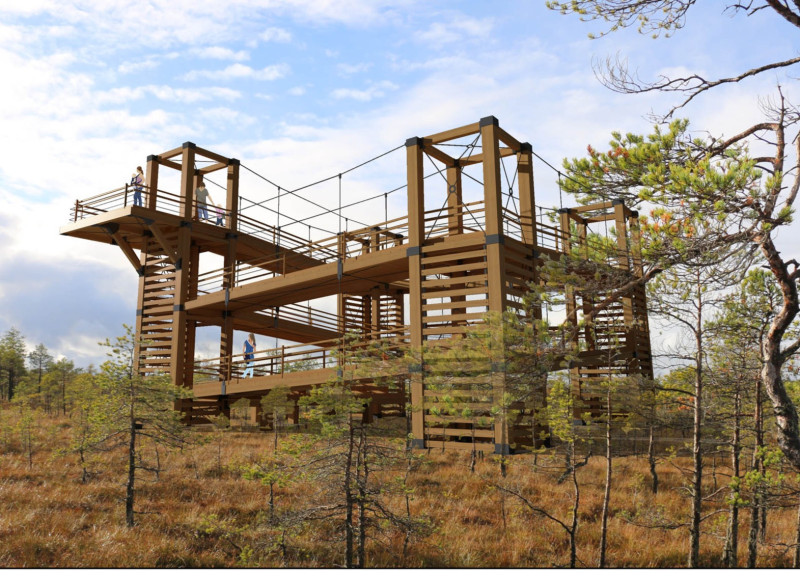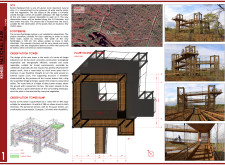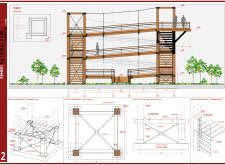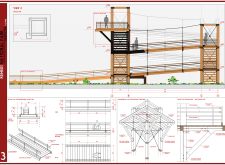5 key facts about this project
The design features a ramp that accommodates wheelchair users, with an 8% gradient providing compliant access. The observation platform rises seven meters, designed to offer unobstructed views of the surrounding landscape while minimizing its visual footprint. The strategic orientation of the observation decks facilitates diverse perspectives of the park’s natural beauty. The architectural intent centers around creating an inviting space for exploration, critique, and understanding of the local ecology.
Innovative structural elements distinguish this project from conventional observation towers. The supporting framework consists of four primary towers paired with tension cables. This unique approach allows for an airy and open design, reducing the need for extensive bracing. Such an approach not only enhances aesthetic appeal but also aligns with the environmental commitment of minimizing material usage while ensuring structural integrity.
The use of locally sourced materials supports the project's sustainability goals. Primary materials include treated wood for the walkways and observation decks, steel for the tension system, and concrete for the foundational elements. These selections promote durability in the humid conditions characteristic of marshland while maintaining an aesthetic connection with the natural surroundings.
The project serves as more than an architectural intervention; it is positioned as a community hub and an educational resource. By facilitating guided tours and environmental studies, it fosters a deeper understanding of the local ecosystem. Its inclusive design encourages diverse visitors to interact with nature in a meaningful way.
To gain a comprehensive understanding of the Observation Tower’s details, explore the architectural plans, sections, and design strategies presented in the project documentation. These elements will provide further insights into the architectural ideas that drove this design and the implications for public interaction with the environment.


























